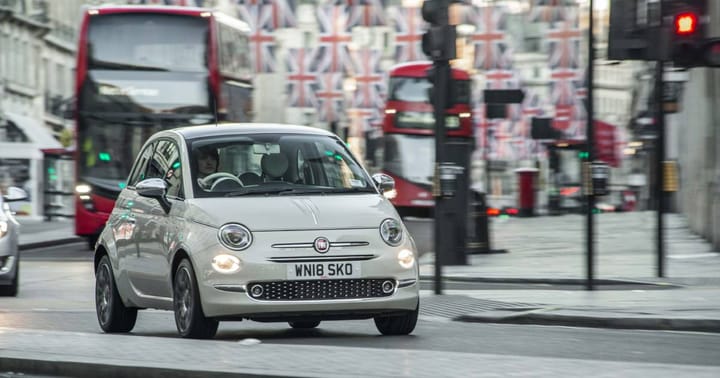EVs must not leave older drivers, and those with disabilities, behind
Let us imagine all else is well and focus our attention on those with less mobility than the majority

Pretend for a moment that the forthcoming ban on the sale of new petrol, diesel and hybrid cars is without issue. I appreciate this stretches credulity, but for the purposes of the topic at hand we should set aside the difficulties implicit in the EV mandate, myriad though they may be. We also need to assume the 2035 ban will go ahead – which, as it already looks to be in serious trouble and comprises only agreed words on pages that can be overwritten, is far from given.
We can only work with the future that is so-far mapped, though, so let us give a moment’s consideration to two often-overlooked demographics in our technology-dependent society: older people, and those with disabilities.
Taking just one of these groups as homogenous is in and of itself problematic: one older person might run marathons and like Bach, while another might be more compromised in their mobility and prefer Berlioz.
The same goes for those with disabilities. This label could cover anything from autism to tetraplegia depending on prevailing definitions, so, again, forgive me for the fact I will be considering those with disabilities in something of a broad sweep – but nothing gets written if at least some generalisation isn’t permitted.
For our purposes, when considering older people, keep in mind a woman in her mid-70s who has been certified by the Driver and Vehicle Licensing Agency as entirely safe to drive, but who has arthritis in her hands and wrists, and relatively limited upper-body strength.
Place yourself in this woman’s shoes, and think about the challenges presented by a conventional petrol or diesel car: an automatic gearbox will make driving easier by removing the need to constantly change gear with her left hand, while light steering and an electronic parking brake may bring further comfort.
Filling this car up at a petrol station is another matter: womanhandling the petrol-pump hose could in itself be difficult, particularly if the car’s filler is on the opposite side to the pump island. Holding the nozzle’s trigger in the ‘open’ position for the time required to fill the tank may, however, be simply impossible due to the limited grip-strength arthritis can bring.
Help, thankfully, should be at hand: either an alert fuel-station attendant spots their customer’s plight in a timely manner, or a system called ‘MyHailo’ is used. This comprises a fob that would likely be kept on the same keyring as our driver's car key, with one press on the fob's button sending a signal to a receiver that alerts staff to her need for assistance.
Given the headline, it should not be difficult to see where this is going.
Switch the petrol car for an electric one: while the steering may be light and the car easy to drive, unless this motorist is at a large public charging hub, which must (surely?) have a permanent attendant on site who can come to her aid, significant difficulties immediately present themselves.
Some help does exist for us, the septuagenarian driver: Motability, the charity that organises for people in receipt of disability benefits to put those benefits towards the lease of a new car, recently announced a scheme allowing members to pay for public EV charging via a bespoke smartphone app and card, accepted at over 70% of rapid public chargers. But while this is in some ways admirable, app-payment systems for public chargers already exist, as companies tend to like taking money to be as frictionless as possible; far tougher nuts remain uncracked.
How can someone who might struggle with a petrol-pump hose and nozzle trigger manage with an equally-heavy if not heavier (and stiffer) public EV charging cable? What is this woman supposed to do if her arthritis makes it difficult or painful to connect a CCS plug (the industry standard) to the charging socket of her car? Doing this is not without effort.
Charging at home might assuage some of these difficulties: home plugs and cables tend to be lighter than public ones and require less of a concerted effort to connect – though it may still be that a friend, neighbour or family member will need to provide assistance for at least some charges – perhaps when the weather is cold and arthritis can be sharp. (As an aside, Motability says half the people on its books do not have off-street parking; a figure for the general population is almost impossible to calculate, but the general consensus is around one third).
All this assumes, naturally, that our 75-year-old driver is comfortable with kiloWatt hours, charging speeds and the like, and has any requisite smartphone application that may be required by a particular car or charger. While many in this demographic will be comfortable with such considerations, I know many who are not. Whether our driver feels comfortable sitting by a charger in her car for 45 minutes at night in the corner of an empty car park should also be considered, as this potential scenario is new and does not arise with a traditional vehicle.
Now let us think of a wheelchair user. Again, this demographic is not an homogenous one, and each chair user can be as different from one another as those from any other group – could be me, could be you; but individuals are easier to think of than groups.
So imagine this wheelchair user doesn't need a powered chair, at least all the time: they have in their car a self-propelled chair they can remove from the passenger footwell, hoik over themselves, out through their door, unfold, then manoeuvre themselves into – an involved task, but an achievable one for some.
Our chair-using driver does not necessarily need to do this if their petrol or diesel car requires refuelling thanks to the petrol-station arrangement described above, but for an electric car more difficulties may present themselves.
Because while some wheelchair users are positively acrobatic in the way they move themselves and their chairs, there will be many for whom the prospect of simultaneously manoeuvring their chair, themselves and an EV charging cable/socket is not a simple one. Further complicating matters may be the need to park close to a kerb or charger: an ambulant driver could simply squeeze themselves between the car and either of these while pulling the cable, but this may not be physically possible if one is in a wheelchair.
I write on this subject from positions of experience: as a former research analyst working with older people, and the nephew of someone who kept driving even after their legs had had other ideas on mobility; you could say this is personal, as well as professional.
Organisations, be they public or private, love topics that give good optics. But while some equality and diversity initiatives are cheap in the grand scheme of things, enacting reasonable adjustments that ensure people with compromised mobility are not left behind by electric cars will take serious time, money and consideration, likely involving concrete, steel, and possibly permanent staff. It is possible that such initiatives will appear organically – perhaps as petrol stations give over increasing amounts of space to chargepoints – but if this is in the pipeline it's being kept awfully quiet, indicating that disabilities and elderliness remain, as they are all too often, something of an afterthought.
It is also worth highlighting that age and disability are two of the nine protected characteristics in the 2010 Equality Act; a legal reading of the interaction of this with the mandate for electric vehicles would surely be interesting, assuming one hasn't already been written.
Setting such details aside, though, older people and those with disabilities may not be en vogue en ce moment, but it is vital they be included at the root as electric cars continue to be introduced – what kind of a society would do otherwise?



